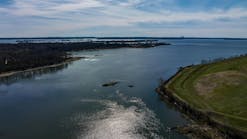ASABE Awards 2013 Soil and Water Engineering Award
Source Advanced Drainage Systems Inc.
Wesley W. Wallender, P.E. was named the American Society of Agricultural and Biological Engineers (ASABE) 2013 ADS Soil and Water Engineering Award recipient for his outstanding accomplishments and contributions to irrigation engineering, hydrology, watershed management and technical literature through research and education. At the University of California, Davis, Wallender is professor of the hydrology and engineering, biological and agricultural engineering department, and land, air and water resources department. The ASABE award, sponsored by ADS, recognizes Wallender's contributions and leadership in the science and management of water.
Wallender connected the spatial variability of infiltration characteristics and soil water to the analysis, design, and evaluation of surface irrigation systems. By linking spatially distributed hydrology models and economic models, he was able to predict poverty in developed and developing countries. He developed a nanoscale-based model to predict saturated hydraulic conductivity as clay soils deform during groundwater pumping, and he quantified water requirements for human diets in Africa, France and the U.S. to demonstrate diets high in animal products require far more water than vegetal diets.
Wallender teaches undergraduate courses in fluid mechanics, geographic information systems, spatial analysis and irrigation system design, and graduate courses in continuum mechanics and surface irrigation hydraulics. He is also a consulting engineer for water districts on water, salinity, and sustainability issues.
During the past 31 years, Wallender’s research program has grown and expanded from the study of the hydraulics of surface irrigation to his current, globally prominent research focused primarily on the interdisciplinary analysis of regional, irrigated watersheds and the application of geographic information systems and spatial analysis.
He also quantified the reduction in winter pesticide runoff when crops are irrigated shortly after pesticide application and initiated the use of spatially distributed hydrology models to analyze and predict water and salinity in irrigated agroecosystems. In addition, Wallender developed a method to predict irrigated land use within the limits of a groundwater system to attenuate deep percolation from the root zone; such predictions are needed to maintain root zone salinity for sustainable agriculture.
Wallender has authored or coauthored more than 175 refereed journal articles and book chapters and has given numerous invited presentations to audiences worldwide. He recently completed editing the second edition of the American Society of Civil Engineers Manual of Practice titled Agricultural Salinity Assessment and Management, considered a leading reference manual for irrigation professionals.
A 31-year member of ASABE, Wallender has provided leadership to Soil and Water division steering, publication, surface irrigation, and hydrology committees and has served as the division’s editor and associate editor. He recently chaired the Publications council and is currently serving on the Nominating committee. Among his many honors are awards from ASABE, including several Technical Reviewer special recognitions, a Leadership citation, and election to Fellow in 2009. His professional memberships and activities include the American Society of Civil Engineers, Intl. Journal of Water Resources Eng. and three advisory boards.
Source: Advanced Drainage Systems Inc.






